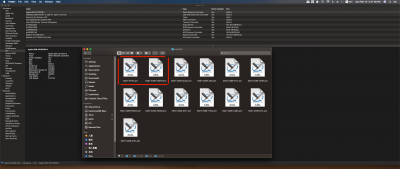Apparently you did not implement my TB-SSDT for the Deluxe II attached in the other post . The TB ACPI table is not at all properly implemented on your system.
View attachment 386047
Also do you use SSDT-DTPG.aml which is compulsory in addition?
Please use
SSDT-X299-TB3HP.aml.zip and
SSDT-DTPG.aml.zip once more attached below . This TB-SSDT does not need any additional adaptation for the Deluxe II as I already adopted it for the onboard TTR controller of the latter motherboard.
It should provide the following results:
View attachment 386022
View attachment 386023
Also do you use the following TB BIOS settings?:
Code:
TBT Root por Selector Thunderbolt USB
Thunderbolt USB Support Disabled
Thunderbolt Boot Support Disabled
Wake From Thunderbolt(TM Devices) Off
Thunderbolt(TM) PCIe Cache-line Size 128
GPIO3 Force Pwr On
Wait time in ms after applying Force Pwr 200
Skip PCI OptionRom Enabled
Security Level SL0-No Security
Reserve mem per phy slot 32
Reserve P mem per phy slot 32
Reserve IO per phy slot 20
Delay before SX Exit 300
GPIO Filter Enabled
Enable CLK REQ Disabled
Enable ASPM Disabled
Enable LTR Disabled
Extra Bus Reserved 65
Reserved Memory 386
Memory Alignment 26
Reserved PMemory 960
PMemory Alignment 28
Reserved I/O 0
Alpine Ridge XHCI WA Disabled
With your Deluxe II, the originally implemented TB ACPI table without any TB-SSDT in your EFI-Folder should look like the one posted by
@applemacosxGOD:
View attachment 386036



